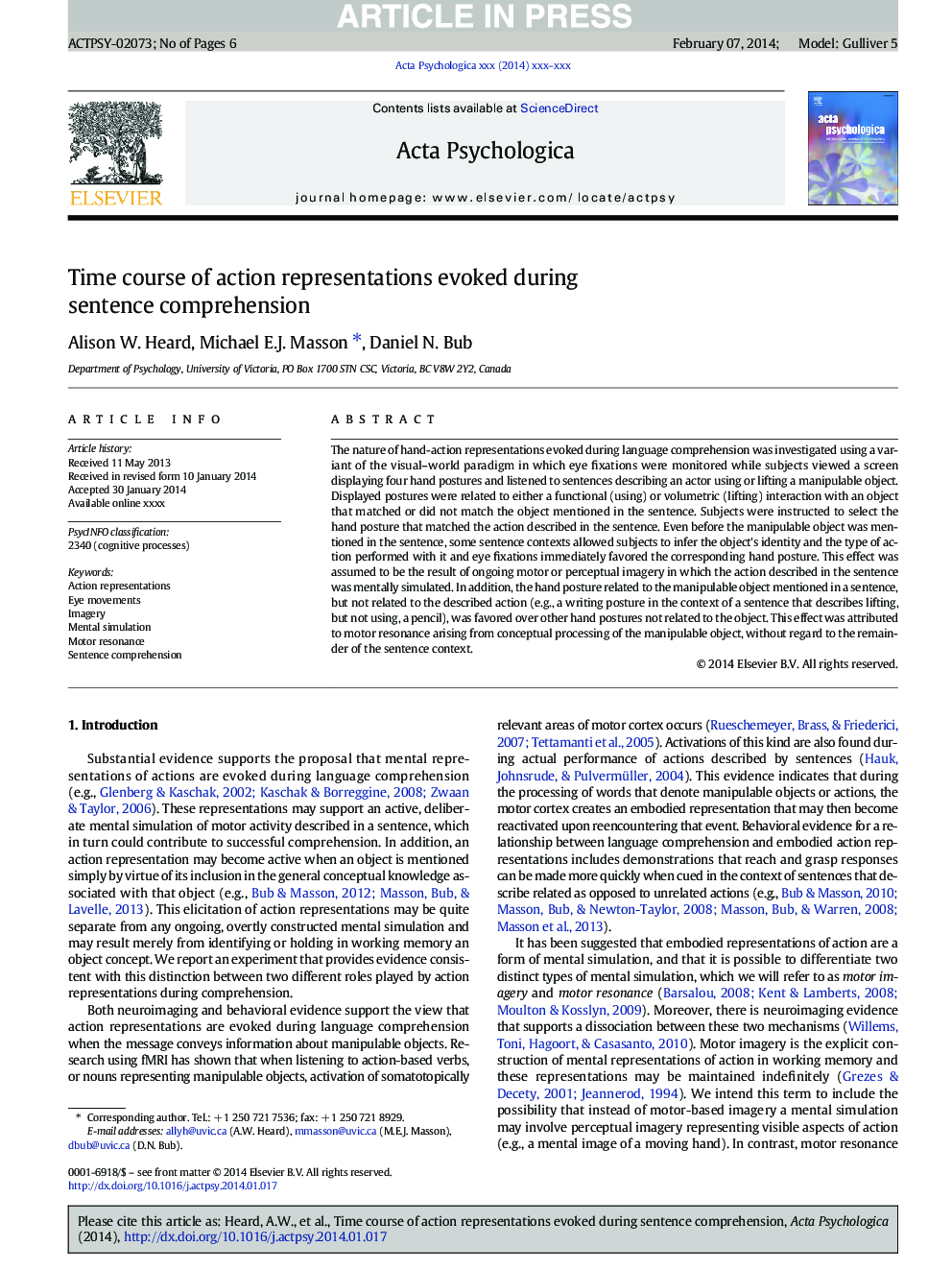| Article ID | Journal | Published Year | Pages | File Type |
|---|---|---|---|---|
| 7277467 | Acta Psychologica | 2015 | 6 Pages |
Abstract
The nature of hand-action representations evoked during language comprehension was investigated using a variant of the visual-world paradigm in which eye fixations were monitored while subjects viewed a screen displaying four hand postures and listened to sentences describing an actor using or lifting a manipulable object. Displayed postures were related to either a functional (using) or volumetric (lifting) interaction with an object that matched or did not match the object mentioned in the sentence. Subjects were instructed to select the hand posture that matched the action described in the sentence. Even before the manipulable object was mentioned in the sentence, some sentence contexts allowed subjects to infer the object's identity and the type of action performed with it and eye fixations immediately favored the corresponding hand posture. This effect was assumed to be the result of ongoing motor or perceptual imagery in which the action described in the sentence was mentally simulated. In addition, the hand posture related to the manipulable object mentioned in a sentence, but not related to the described action (e.g., a writing posture in the context of a sentence that describes lifting, but not using, a pencil), was favored over other hand postures not related to the object. This effect was attributed to motor resonance arising from conceptual processing of the manipulable object, without regard to the remainder of the sentence context.
Keywords
Related Topics
Life Sciences
Neuroscience
Cognitive Neuroscience
Authors
Alison W. Heard, Michael E.J. Masson, Daniel N. Bub,
